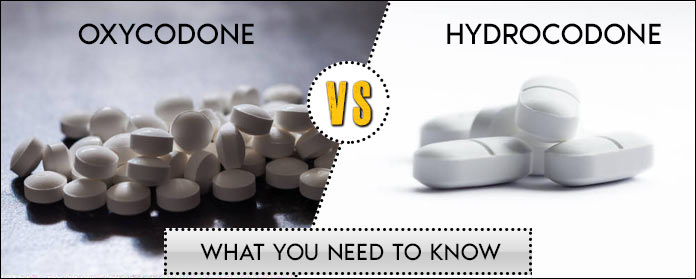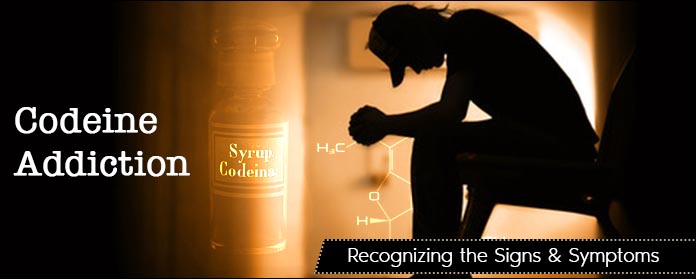Oxycodone vs hydrocodone has been a question for quite a while and the two drugs have been in the news over the past few years as part of the rising epidemic of opioid addiction in the United States.
In fact, every day, more than 115 people die from addiction to opioids and nearly one-third of people prescribed opioids abuse them.
While both drugs are considered problematic when overused, there are a few subtle differences that should be considered, especially if your doctor is considering using one of these medications to treat you for long-term pain.
What Is Oxycodone?
Oxycodone is a narcotic that minimizes discomfort by increasing your tolerance for pain, rather than blocking the pain itself. It is sold under the brand names of OxyContin, Roxicodone, Percocet, Percodan, Oxecta, Combunox, Targiniq ER, Endocet, and others.
Oxycodone is normally prescribed to treat pain that is severe and requires around-the-clock management.
Prudent health professionals usually recommend it only after the patient has had no relief from alternative methods of pain management in order to minimize the chance of addiction.
Oxycodone is similar to codeine, hydrocodone, and morphine in the way it works and its effects on your body.
A Brief History of Oxycodone
Oxycodone has been around for over 100 years, having been developed in 1916 ironically, as a non-addictive alternative to opium-based drugs. It’s considered an opioid because of the similarities to codeine and morphine, which are naturally derived from the opium poppy.
Just to make things clearer:
Opiate: A drug derived from a naturally occurring substance in the opium poppy.
Opioid: A synthetic substance created to mimic the pain-relieving characteristics of opium-derived drugs.
Oxycodone was introduced to America in 1939, and by 1950, the drug Percodan (oxycodone and aspirin) was being prescribed by American physicians.
The drug was so addictive that by 1963, the attorney general of California declared Percodan abuse the cause of one-third of the state’s drug addictions.
How Oxycodone Works
Oxycodone works by attaching to endogenous opioid receptors in your brain. That’s a mouthful, right? But all you need to know is that these receptors attract naturally produced endorphins and enkephalins, which are substances in your body that change your response to pain.
When oxycodone attaches to these receptors instead of endorphins and enkephalins, however, your experience of pain becomes even more muted. This is because oxycodone is much stronger than the natural substances your brain produces.
In addition to blocking pain, the intense feeling of euphoria associated with oxycodone also triggers a release of dopamine, the “feel good” neurotransmitter. This additional boost of euphoria can contribute to a cycle of addiction.
Oxycodone is about 1.5 times more powerful than morphine, and is considered a Schedule II drug by the Drug Enforcement Administration.
A Schedule II drug is a drug that has a high potential for abuse. These drugs are known to have the potential to cause physical and/or psychological dependence, even when used as directed.
Side Effects of Oxycodone
Since it can depress respiration, oxycodone should not be used in elderly patients or those with compromised respiratory systems, like asthmatics, sufferers of chronic obstructive pulmonary disease (COPD), and anyone with airway restriction.
Besides reduced pain sensitivity and accompanying euphoria, oxycodone is associated with the following side effects:
- Constipation
- Nausea
- Vomiting
- Sleepiness
- Dizziness
- Itching
- Dry mouth
- Sweating
In high doses, or in the case of an overdose, oxycodone causes:
- Low blood pressure
- Paused breathing
- Circulatory collapse
- Constricted pupils
- Brain damage
- Death
Still, this drug is recognized as a good adjunct for those receiving palliative care for cancer pain and for other end-of-life treatments. If used cautiously, it can still be useful to manage short-term severe pain, such as post-operative pain.
It is important to use this drug under medical supervision and take it only as long as necessary to alleviate short-term pain.
What Is Hydrocodone
Hydrocodone is another opioid drug used to manage pain in the same way as oxycodone — by changing your response to pain input. Hydrocodone is synthesized from the natural compound codeine, a substance found in the opium poppy.
It’s used for relief of moderate to severe pain and can be combined with anti-inflammatories, cough medicine, and anti-histamines to manage severe colds and other ailments.
Ninety-nine percent of the hydrocodone in the world is prescribed within the United States. Some brand names you might be familiar with are Vicodin, Norco, Lorcet, and Lortab.
Side Effects of Hydrocodone
The side effects of hydrocodone are similar to oxycodone, and can include:
- Constipation
- Sleepiness
- Dizziness
- Fuzzy thinking
- Dry throat
- Itching/rash
- Constricted pupils
- Difficulty urinating
- Abnormal moods
Serious side effects can include:
- Slow or paused breathing
- Hallucinations
- Rapid heartbeat
- Muscle stiffness or twitching
- Loss of coordination
- Sexual problems
- Irregular menses
- Chest tightness
Differences Between Oxycodone and Hydrocodone
Both drugs manage moderate to severe pain in the same way — by decreasing your subjective sensitivity to the experience of pain. And both act on your nervous system in roughly the same manner.
Both can be combined with acetaminophen to control fever and inflammation, but only hydrocodone can be added to ibuprofen, guaifenesin, and pseudoephedrine to help reduce inflammation, clear congestion, and manage coughs.
According to the Drug Enforcement Administration, hydrocodone is the most prescribed medication in the United States, and an additional 24.4 million people are using the drug for non-prescription reasons.
While both drugs are used to treat pain, one study showed that it takes 50% more hydrocodone to get the same effects as oxycodone, which might be why doctors are more willing to prescribe it over oxycodone.
Also, hydrocodone has fewer severe side effects than oxycodone, but both medications react poorly with alcohol and a class of drugs called benzodiazepines (Xanax, Ativan, Valium, and others.)
OxyContin vs Oxycodone
Oxycodone is the name for the active ingredient in a number of pain medications, including OxyContin. Basically, the drug OxyContin has a timed-release version of oxycodone included in its makeup.
So, when someone is talking about OxyContin, they’re referring to a timed-release version of the opioid oxycodone.
Here’s the functional difference between how they work.
A dose of oral oxycodone is effective within 10-30 minutes of taking the drug, with peak levels in the blood appearing in 30-60 minutes.
With OxyContin, peak plasma levels are attained at the three-hour mark, with effectiveness continuing for the following three to six hours.
An OxyContin tablet is coated with a substance that makes it slow to dissolve in a patient’s stomach acid, giving a timed-release effect for extended relief of pain over a 12-hour period.
In the past, if the tablet was crushed, the user received all 12 hours of pain-relieving effects instantly, causing serious addiction issues.
OxyContin was reformulated in 2013 so that it would turn into a useless gel if it was crushed. It can no longer be snorted or injected, reducing the chances of misuse.
How Long Does Oxycodone Stay in the Blood or Urine?
About 10% of oxycodone is excreted in the urine unchanged by metabolism. In addition, since oxycodone is excreted mainly in sweat and urine, patients with kidney impairment are at increased risk of toxicity from the drug.
Other factors that affect how long the drug stays in your system include your weight, age, and kidney and liver function, food consumption, and basal metabolic rate.
On average, however, the drug can be detected:
- In your salivawithin 15 to 30 minutes and 1 to 4 days afterward.
- In your bloodwithin 15 to 30 minutesand about 1 day afterward.
- In your urinewithin 2 hours for up to 3 to 4 days later.
How Long Does Hydrocodone Stay in the Blood or Urine?
Like oxycodone, the amount of hydrocodone found in your system by a laboratory test will depend on factors that are unique to you.
Your age, weight, metabolism, kidney and liver health and other factors, including the amount of the drug taken and the quality of the drug, can affect its longevity in your system.
Average estimates of how long hydrocodone is detectable through testing are:
- Detectable in urine for two to four days.
- Detectable in saliva up to 48 hours.
- Detectable in blood up to 24 hours.
Oxycodone vs Hydrocodone Potential for Abuse
Because both hydrocodone and oxycodone are related to opiates, they both have a high potential for addiction.
Until recently, hydrocodone — the cheaper and, therefore, more accessible of the two drugs — was considered less addictive than oxycodone. It has since been put in the Schedule II drug category, which is a category it now shares with oxycodone.
Because of its wider availability, hydrocodone remains a problem, particularly among the youth. One study found that 4.8% of seniors in high school had used Vicodin in 2014 while only 3.3% had taken oxycodone.
Oxycodone, however, seems to be more psychologically addictive and produces a more intense high that addicts crave.
Treatment for Abuse of Opioids
With over 2.5 million people suffering from opioid addiction in the United States, there are many options available if you are experiencing an addiction to oxycodone or hydrocodone.
The National Institute on Drug Abuse highly recommends a treatment program that combines behavioral counseling and therapy with the use of recommended medications to improve patient outcomes.
This is known at MAT, or Medication-Assisted Treatment.
Studies show that MAT decreases deaths from opioid abuse and reduces infectious disease transmission among patients receiving the treatment. Furthermore, MAT treatments are also shown to help keep patients on the road to recovery by reducing relapse.
Medicines used in this therapy include buprenorphine, methadone, and naltrexone. Don’t let the nature of those first two medications throw you off. The National Institute on Drug Abuse notes that you are not simply “substituting one addiction for another.”
The use of buprenorphine and methadone help restore healthy balance to an addicted brain, reducing cravings for opioids, and allowing patients to think more clearly so that therapy and counseling can do their work.
In fact, the Food and Drug Administration (FDA) approved a once-per-month injection of buprenorphine that helps to reduce the possibility of abuse to provide safer access to this helpful medication.
This is in addition to a 2016 approval of a subcutaneous implantable version of the buprenorphine that would release a low dosage of the drug over a six-month period.
Naltrexone, while decreasing the desire for opiates, also works to prevent the effects of ingested opiates or opioids on the body. So, if you’re taking naltrexone, any opioid you take will not give the desired “high,” reducing the likelihood of a relapse.
Studies found the once-a-month injectable version of naltrexone works better than the oral medication. And since naltrexone is not a registered substance, it’s easy to prescribe without worrying about abuse.
New Treatments on the Horizon
A new vaccine— yes, vaccine — to protect against oxycodone and hydrocodone abuse is being developed and has passed the first battery of preclinical trials.
Vaccinologists at the University of Minnesota have developed a vaccine that reduces the motivation to abuse these drugs by reducing the reward-inducing effects on the brain.
So far, the vaccine has proven useful in rat models, but has not been tested in human clinical trials.
Another treatment being explored is Transcranial Direct Current Stimulation. Despite its frightening-sounding name, the treatment is noninvasive, using ultrasound or electromagnetic fields to penetrate the skull and produce an effect on cortical activity.
While it’s still in the pioneering stage, this noninvasive technique for reducing opioid cravings has already shown promise in treating other neuropsychological disorders.
In fact, researchers hope that in the future, technologies like transcranial direct current stimulation can help forestall the development of the addiction in the first place in at-risk individuals.





